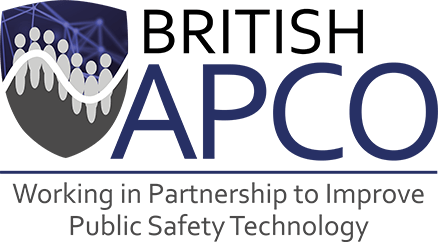MAIT
Multi Agency Incident Transfer (MAIT)
Many of us have experienced the issues caused by the need to share accurate information, at speed, often with many partners, during an emergency incident. Even today, the solution for many organisations is to make a phone call. This ties-up a control room operator at both ends and, even with direct lines, it can cause queues and further delays. Some organisations benefit from direct, machine to machine, data communication which helps but still requires many links to share information with more than one partner.
Back in 2016, British APCO recognised these issues and worked with the Cabinet Office, emergency services and commercial organisations to develop a common standard for the sharing of incident information between control rooms. The schema was approved in 2016 and is now an adopted open standard for government.
MAIT moves on with the Development of Cloud Based Hosting
British APCO is very grateful to Tony Bracey, Programme Director of the Joint Emergency Services Group (JESG) in Wales for the work he has done to take MAIT to the next stage. Working with one of the MAIT suppliers, ATOS, Tony has deployed MAIT across Wales that includes all the Welsh emergency services using a hub arrangement. London Fire Brigade and the Maritime & Coastguard Agency have also been closely involved as interested observers to ensure the project has a varied perspective.
Tony's presentation at the BAPCO Satellite Series event in Newcastle in November 2019 is attached below – and finally as we come into 2022 and beyond there is traction to have MAIT rolled out more widely in the UK. There is now supplier choice – with the AVR Group and ATOS both making their MAIT solutions available via G-Cloud 12 on the Government’s Digital Marketplace; further suppliers are also looking at how they too can support MAIT.
BAPCO will continue to work to promote MAIT and further support the future development of the schema based upon the requirements and needs of the membership. It will undoubtedly develop as the schema comes into wider use. We encourage all suppliers of control room systems to design the standard into their systems – being mindful of the potential need for multiple providers to be able to exchange information seamlessly – and for all users to specify it.
Without doubt, its widespread introduction will improve the overall efficiency and performance of control rooms and the 999 system itself, enhancing the ability of emergency responders in delivering an effective and efficient service to the public – and being a useful building block for handling Next Generation 999/112 services.
Click here for the official MAIT Guidance provided by HM Government on the Gov.UK website.
Further Resources
MAIT - Update and Deployment Plan - Tony Bracey
19th Nov 2019
Delivered by Tony Bracey, Joint Emergency Services Group (JESG) Wales



